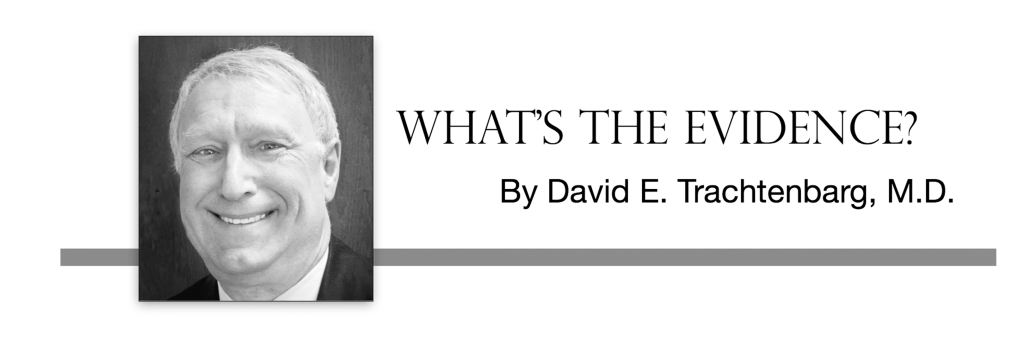(part 1 of 2)
Breast cancer is the most common cancer in women except for skin cancer. More than 230,000 women will be diagnosed with breast cancer this year and 40,000 women will die from breast cancer. There are more than 2.8 million women breast cancer survivors in the United States, according to the American Cancer Society. This column looks at the current evidence for screening. Next month’s column will address the evidence for our screening methods.
To successfully screen for a disease, three conditions must be met. First, the condition must be common in the people screened. Clearly this is the case for women. On the other hand, screening is not advised for men since only about 1 percent of breast cancer cases occur in men.
Second, the test should find the problem early before symptoms develop. Breast cancer screening meets these criteria. About 50 percent of breast cancers are currently only detected screening.
Lastly, there must be a treatment that improves outcomes if the screening test is positive. Breast cancer also meets this criteria, and the treatment is improving.
Even though breast cancer screening recommendations are evidence based, there are still opportunities for improvement. A screening test should be low cost. In 2007, Medicare spent over $1 billion a year on screening mammography and follow-up testing. This nearly equals the cost for treating breast cancer, according to Medical News Today. A test should ideally always be positive if you have the disease. The National Cancer Institute (NCI) estimates that screening mammography misses about 20 percent of breast cancers. An ideal screening test would also not be positive unless one has the disease. One study cited by the NCI found one women in seven required additional testing, but only one woman in 200 had a final diagnosis of cancer. This level of additional testing was very stressful for the 13 women waiting to find out if they actually did have cancer. Weighing all of the above to make the best evidence based recommendation is challenging. One excellent source for screening evaluations is the U.S. Preventive Services Task Force. The Task Force advises screening all women between 50-74 years. Breast cancer screening is estimated to reduce the risk of dying from breast cancer by 15-20 percent, according to NCI.
There is good evidence to support screening. However, now there are many methods. Mammograms now can be done with x-rays on film or digitally. The digital image can be 2-D or 3-D. Which test is best? Is doing a self breast exam useful? This will be covered next month.
Key References
American Cancer Society: http://www.cancer.org/cancer/breastcancer/detailedguide/breast-cancer-key-statistics
Nelson HD, Tyne K, Naik A, Bougatsos C, Chan BK, Humphrey L: Screening for Breast Cancer: An Update for the U.S. Preventive Services Task Force. Ann Intern Med. 17 November 2009: 151(10):727
U.S. Preventive Services Task Force: http://www.uspreventiveservicestaskforce.org/uspstf/uspsbrca.htm
Medical News Today: http://www.medicalnewstoday.com/articles/254701.php


Recent Comments